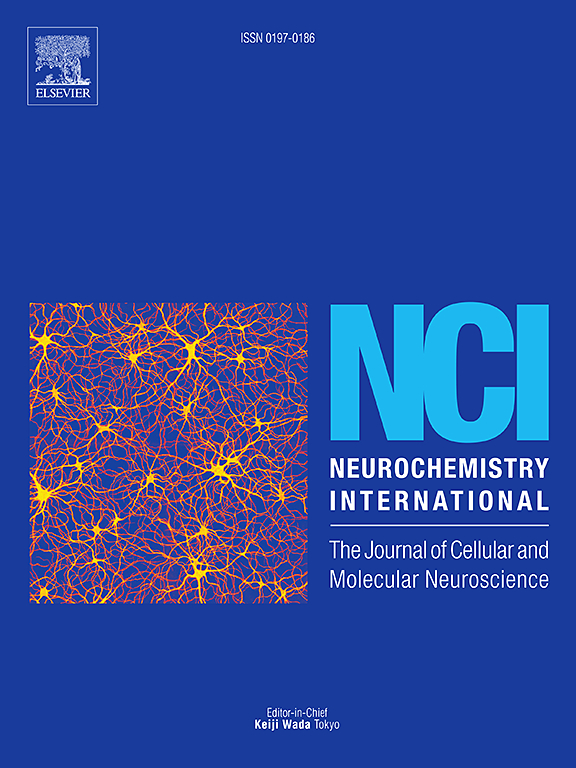在鸡胚模型中,抗抑郁药文拉法辛诱导miR-92上调和组织学改变。
IF 4
3区 医学
Q2 BIOCHEMISTRY & MOLECULAR BIOLOGY
引用次数: 0
摘要
抗抑郁药通常用于治疗焦虑症和抑郁症,包括孕妇。这些药物影响关键神经递质的吸收和代谢,如血清素、去甲肾上腺素和多巴胺。然而,抗抑郁药功能的许多方面仍不清楚,特别是在怀孕期间使用它们对神经发育的影响。为了探讨这一点,我们采用了一个3r友好的鸡胚胎模型来研究抗抑郁药使用的细胞和分子意义。我们在研究中重点研究了常用的抗抑郁药:艾司西酞普兰(escitalopram,一种选择性血清素再摄取抑制剂)和文拉法辛(venlafaxine,一种血清素和去甲肾上腺素再摄取抑制剂),这两种药都是孕期常用的处方。药物分布分析表明,这两种抗抑郁药物在发育中的鸡胚胎的大脑中达到临床浓度,并持续数小时。高通量mirna测序显示,文拉法辛上调了鸡小脑中13种不同的mirna。具体来说,miR-92及其人类同源物miR-363分别在鸡小脑和神经分化的人SH-SY5Y细胞中显著上调。神经突指标显示文拉法辛组神经突生长显著减少,但艾司西酞普兰组没有。此外,文拉法辛引起组织学改变,如白质增加,小脑皮层和分子层厚度减少。这两种药物都减少了外颗粒层的厚度和有丝分裂事件的数量,影响了大脑这个关键的生发区。这些发现突出了艾司西酞普兰和文拉法辛对神经发育的独特影响,并提高了对胎儿在子宫内暴露于抗抑郁药物的潜在不良神经系统影响的认识。本文章由计算机程序翻译,如有差异,请以英文原文为准。
The antidepressant venlafaxine induces upregulation of miR-92 and histological alterations in a chicken embryo model
Antidepressants are commonly prescribed for treating anxiety disorders and depression, including pregnant patients. These medications influence the absorption and metabolism of key neurotransmitters such as serotonin, norepinephrine, and dopamine. However, many aspects of antidepressant function remain unclear, especially regarding their impact on neurodevelopment when used during pregnancy. To explore this, we employed a 3R-friendly chicken embryo model to investigate the cellular and molecular implications of antidepressants use. We focused on commonly used antidepressants for the study: escitalopram, which is a selective serotonin reuptake inhibitor; and venlafaxine, a serotonin and noradrenaline reuptake inhibitor, both of which are frequently prescribed during pregnancy.
Drug distribution analysis showed that both antidepressant drugs reached clinical concentrations in the brain of developing chicken embryos and persisted for several hours. High-throughput miRNA-sequencing showed that venlafaxine upregulated 13 different miRNAs in the chicken cerebellum. Specifically, miR-92 and its human ortholog, miR-363, were significantly upregulated in chicken cerebellum and neuronally differentiated human SH-SY5Y cells, respectively. Neurite metrics showed a significant reduction in neurite outgrowth with venlafaxine, but not with escitalopram. Furthermore, venlafaxine caused histological alterations, such as increased white matter and reduced thickness of the cortical and molecular layer in the cerebellum. Both drugs reduced the thickness of the external granular layer and the number of mitotic events, impacting this crucial germinal zone of the brain.
These findings highlight distinct neurodevelopmental effects of escitalopram and venlafaxine and raise awareness for potential adverse neurological effects in offspring exposed to antidepressants in utero.
求助全文
通过发布文献求助,成功后即可免费获取论文全文。
去求助
来源期刊

Neurochemistry international
医学-神经科学
CiteScore
8.40
自引率
2.40%
发文量
128
审稿时长
37 days
期刊介绍:
Neurochemistry International is devoted to the rapid publication of outstanding original articles and timely reviews in neurochemistry. Manuscripts on a broad range of topics will be considered, including molecular and cellular neurochemistry, neuropharmacology and genetic aspects of CNS function, neuroimmunology, metabolism as well as the neurochemistry of neurological and psychiatric disorders of the CNS.
 求助内容:
求助内容: 应助结果提醒方式:
应助结果提醒方式:


